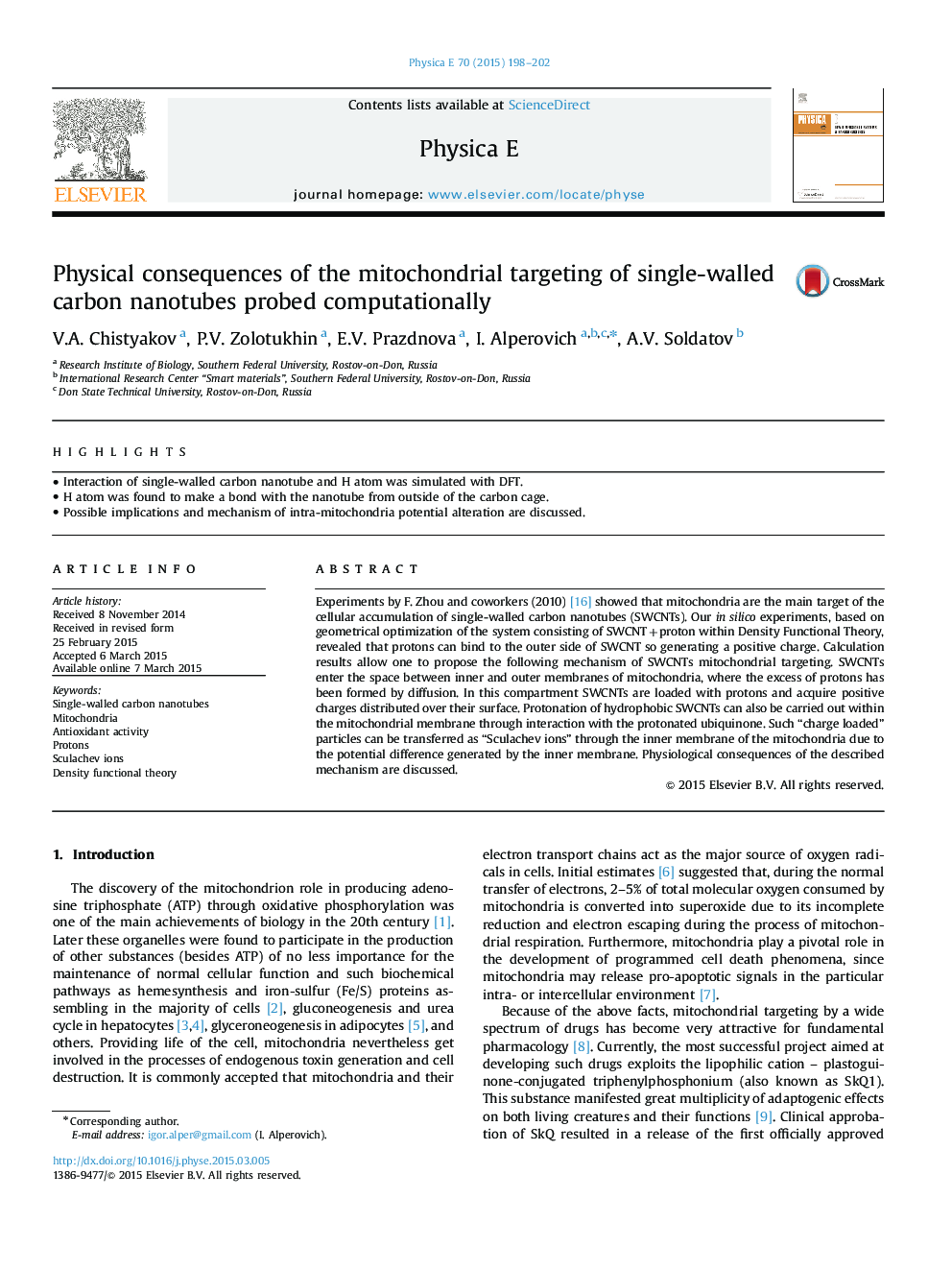| Article ID | Journal | Published Year | Pages | File Type |
|---|---|---|---|---|
| 1544107 | Physica E: Low-dimensional Systems and Nanostructures | 2015 | 5 Pages |
•Interaction of single-walled carbon nanotube and H atom was simulated with DFT.•H atom was found to make a bond with the nanotube from outside of the carbon cage.•Possible implications and mechanism of intra-mitochondria potential alteration are discussed.
Experiments by F. Zhou and coworkers (2010) [16] showed that mitochondria are the main target of the cellular accumulation of single-walled carbon nanotubes (SWCNTs). Our in silico experiments, based on geometrical optimization of the system consisting of SWCNT+proton within Density Functional Theory, revealed that protons can bind to the outer side of SWCNT so generating a positive charge. Calculation results allow one to propose the following mechanism of SWCNTs mitochondrial targeting. SWCNTs enter the space between inner and outer membranes of mitochondria, where the excess of protons has been formed by diffusion. In this compartment SWCNTs are loaded with protons and acquire positive charges distributed over their surface. Protonation of hydrophobic SWCNTs can also be carried out within the mitochondrial membrane through interaction with the protonated ubiquinone. Such “charge loaded” particles can be transferred as “Sculachev ions” through the inner membrane of the mitochondria due to the potential difference generated by the inner membrane. Physiological consequences of the described mechanism are discussed.
